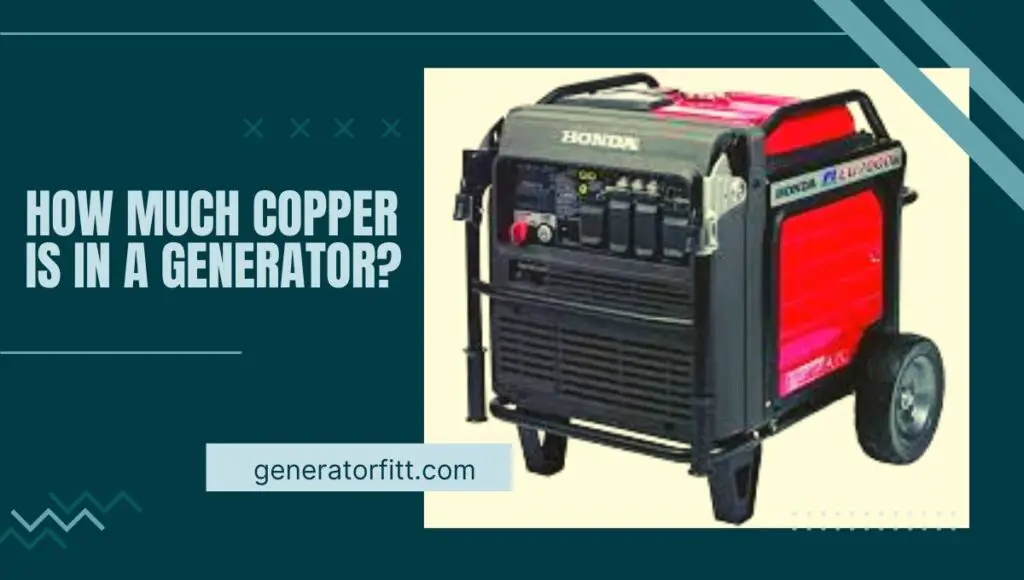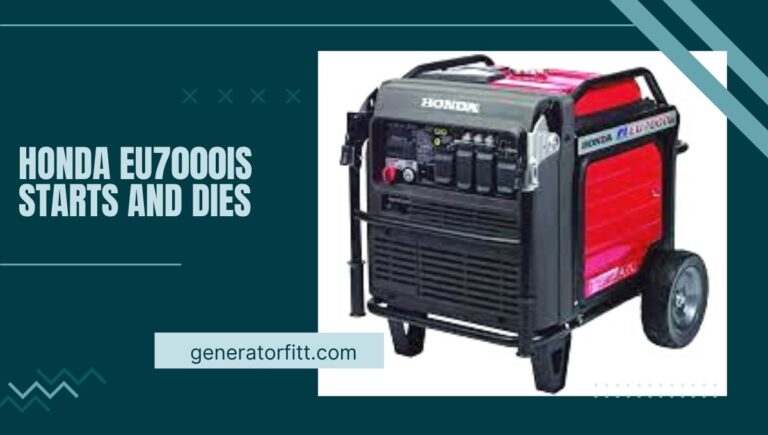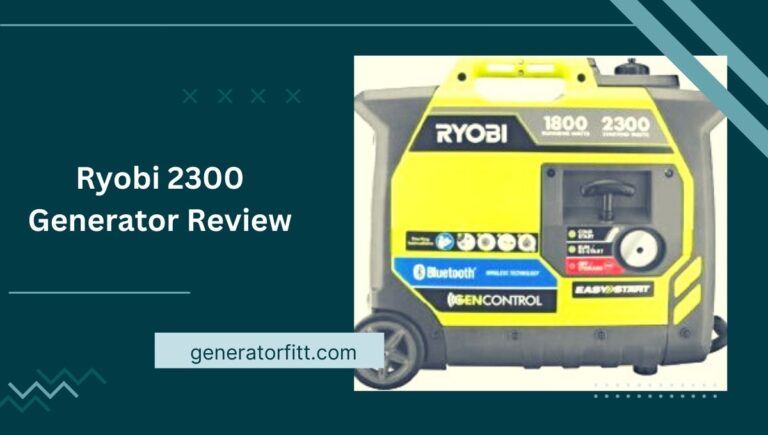How Much Copper is in a Generator? (Ultimate Guide) In 2023
How much copper is in a generator? Generators are crucial for providing backup power during blackouts or as a primary source of electricity in areas without a reliable grid.
They are complex machines made up of various components, including wiring and electrical windings. One essential material used in generators is copper, which is an excellent conductor of electricity.
Copper is widely used in electrical equipment because of its high conductivity, durability, and ability to withstand high temperatures.
In this context, the question arises: how much copper is actually in a generator? In this article, we’ll explore the amount of copper typically found in generators and why it is such an important material in their construction.

How much copper is in a generator?
The amount of copper in a generator can vary depending on the size and type of the generator. Generally, generators contain a significant amount of copper because copper is an excellent conductor of electricity and is commonly used in electrical equipment.
For example, a small portable generator may have a few pounds of copper in its wiring and components, while a large industrial generator could have several hundred pounds of copper in its windings and other components.
It’s important to note that while copper is a valuable material and can be recycled, attempting to extract copper from a generator without proper training and equipment can be dangerous and should only be done by professionals.
A brief explanation of generators and their importance
Generators are machines that convert mechanical energy into electrical energy. They are essential for providing backup power during blackouts or as a primary source of electricity in areas without a reliable grid.
Generators are used in various settings, including homes, businesses, and industrial sites, to power essential equipment and keep operations running smoothly.
Copper in Generators
Copper is an important material used in generators due to its excellent electrical conductivity, durability, and ability to withstand high temperatures.
Copper is used in various parts of a generator, including the windings, wiring, and electrical connections.
The amount of copper in a generator can vary depending on the size and type of the generator.
Small portable generators may have a few pounds of copper in their wiring and components, while large industrial generators could have several hundred pounds of copper in their windings and other components.
The use of copper in generators provides numerous benefits, including improved efficiency and reliability.
Additionally, copper is a valuable material that can be recycled, making it an environmentally friendly choice for generator manufacturers.
Importance of Copper Recycling
Copper is a valuable and finite resource, and its demand continues to increase as technological advancements rely heavily on copper.
Recycling copper is essential for sustainability and reducing environmental impact. Recycling copper saves energy and reduces carbon emissions compared to mining and refining new copper.
Additionally, recycling copper is cost-effective for manufacturers as recycled copper is cheaper than newly mined copper.
Furthermore, extracting copper from generators without proper training and equipment can be dangerous and should only be done by professionals.
Therefore, proper copper recycling practices are crucial for both environmental and safety reasons.
People also ask
How much copper is used in the generator?
The amount of copper used in a generator varies depending on the size and type of the generator. Copper is an important material in generators due to its excellent electrical conductivity and durability.
For example, a small portable generator may have a few pounds of copper in its wiring and components, while a large industrial generator could have several hundred pounds of copper in its windings and other components.
The copper is used in various parts of the generator, including stator windings, rotor windings, and electrical connections.
The use of copper in generators provides numerous benefits, including improved efficiency and reliability.
Additionally, recycling copper from generators and other electrical equipment is important for sustainability and reducing environmental impact.
Is there copper in generators?
Yes, copper is commonly used in generators. Copper is an excellent conductor of electricity and is used in various parts of a generator, including windings, wiring, and electrical connections.
Copper is also durable and can withstand high temperatures, making it an ideal material for use in electrical equipment.
The amount of copper in a generator varies depending on the size and type of the generator,
but it can range from a few pounds in small portable generators to several hundred pounds in large industrial generators.
What has the most copper in it to scrap?
Items that typically contain a significant amount of copper that can be recycled as scrap include electrical cables and wires, plumbing pipes, and electronic equipment such as computers and other devices.
Can you scrap an old generator?
Yes, an old generator can be scrapped for recycling. Generators often contain copper and other valuable metals that can be reclaimed through recycling.
Properly recycling an old generator not only helps the environment by reducing waste but can also earn you money for scrap materials.
However, extracting copper and other metals from generators can be dangerous and should only be done by professionals with the necessary training and equipment.
Conclusion
In conclusion, copper is an important material used in generators due to its excellent electrical conductivity, durability, and ability to withstand high temperatures.
The amount of copper in a generator can vary depending on the size and type of the generator, but it can range from a few pounds in small portable generators to several hundred pounds in large industrial generators.
Recycling copper from generators and other electrical equipment is essential for sustainability, reducing environmental impact, and earning money for scrap materials.
However, extracting copper from generators can be dangerous and should only be done by professionals.
Proper copper recycling practices are crucial for both environmental and safety reasons, making it an important aspect to consider when dealing with generators and other electrical equipment.
Hi, I am Brines Loe and I am an Expert in Generators I have Experience in This Field I want to Help You About This Website! Welcome to our generator (Outdoor) Guide blog! We are dedicated to providing you with the latest information and tips on outdoor generators, ensuring that you have the knowledge you need to make informed decisions about which generator is right for you.






